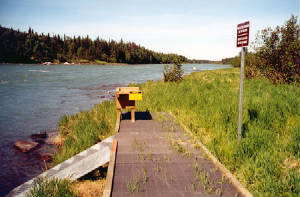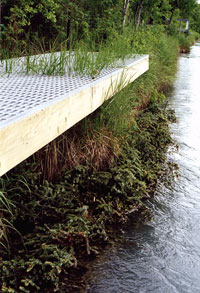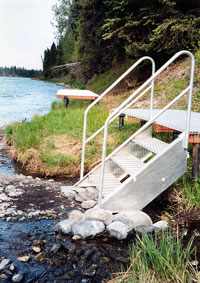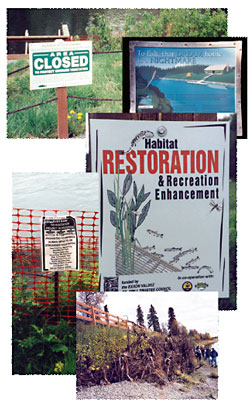|
Healthy Watersheds Are Important To Alaska Salmon
Fish depend on watersheds for survival. Single salmon must
survive to maintain the population, and populations must survive to maintain the salmon. Salmon have different habitat
needs at each life stage and these change with the season. Salmon use different parts of their watershed to find
habitat for food, places to hid and be safe, habitat for winter, spawning, and growing up.
What Is A Watershed?
A watershed is an entire area which drains into a river.
A watershed includes: glaciers, small streams, lakes, wetlands, and the mouth of the river. A watershed is like
a factory that makes fish. Different parts or the factory (habitat) have different functions, but each part depends
on the other parts to produce fish. Salmon are a valuable addition to watersheds because they add "Marine Nutrients" to
the food chain.
Where In The Watershed Do Fish Find Habitats?
The five species of salmon spawn in different parts of a
watershed and at various times. Fish find safety from enemies and floods around overhanging banks, space
between rocks, floating wood, and curving shorelines.
Protection Techniques

Walkways: Walkways may
be built out of metal, fiberglass, and wood.
Walkways can hang over a river. This will provide good fishing access
while protecting the river bank.
Stairs or ladders can easily be attached to raised walkways to provide access
into lakes or streams.
Floating docks can be connected to walkways to provide boating access.
Walkways longer than 50 feet need to have wildlife breaks for safe passage.
Walkways that light can go through, provide access while protecting the riverbank.


Fencing and Signs:
Fencing protects
plants, flowers and trees on the river bank. Fencing protects the new growth from being walked on, allow animals
to pass through, and gives access to visitors. Fencing should be combined with signs to tell people of
the regrowth in progress and to keep them off of the area. Fencing may be used with raised, walkways to allow
visitors to view the area.

|

